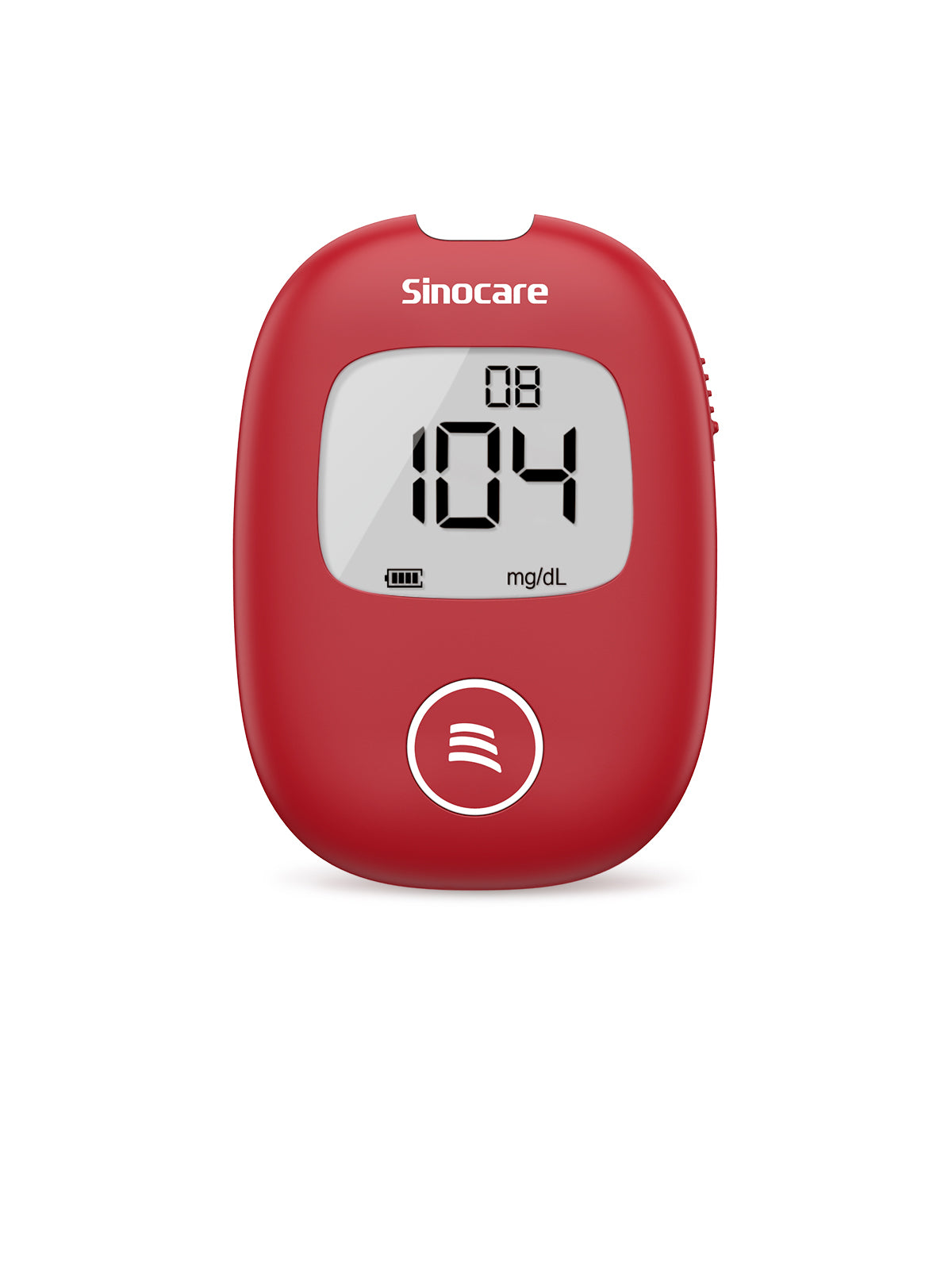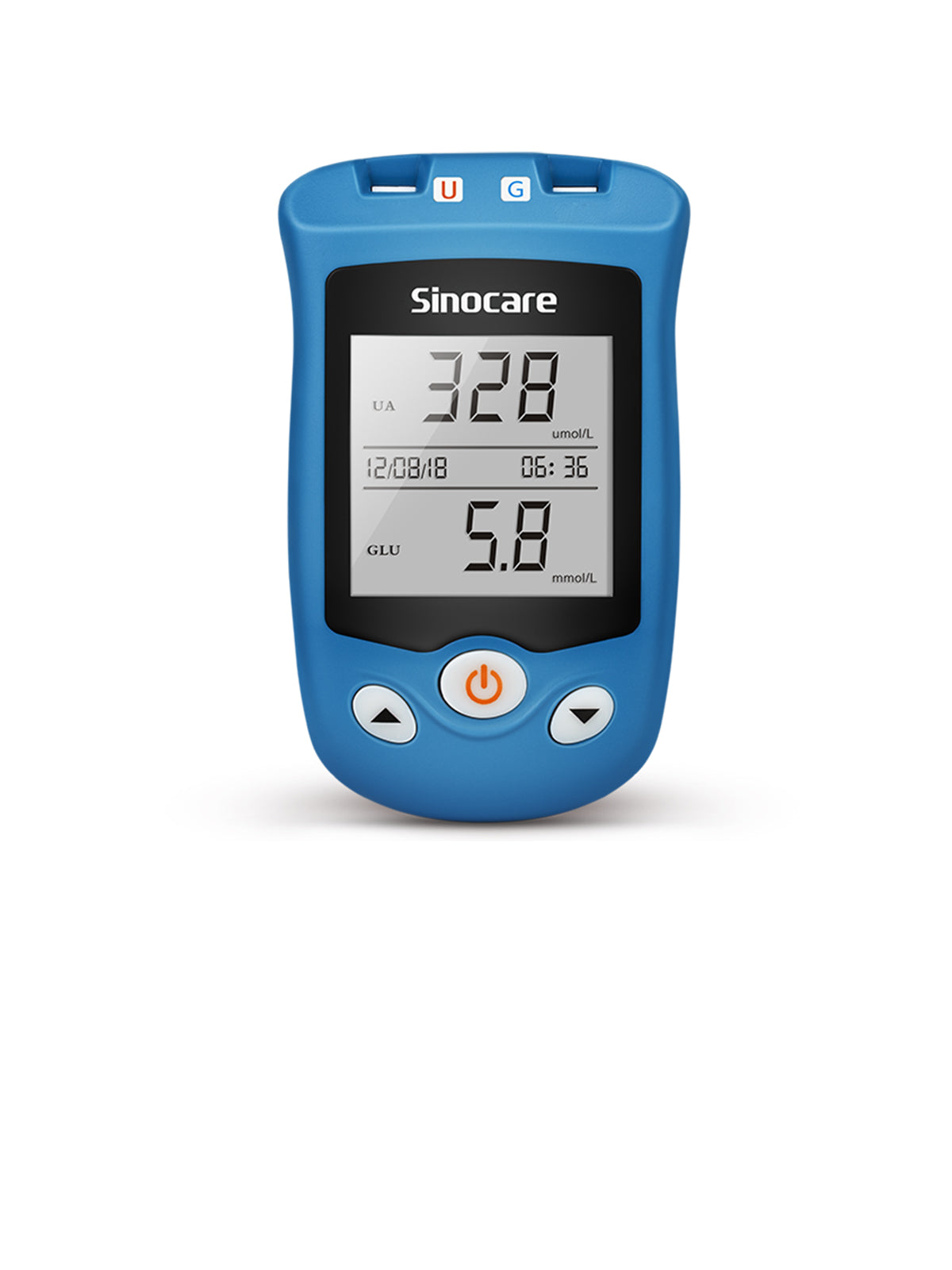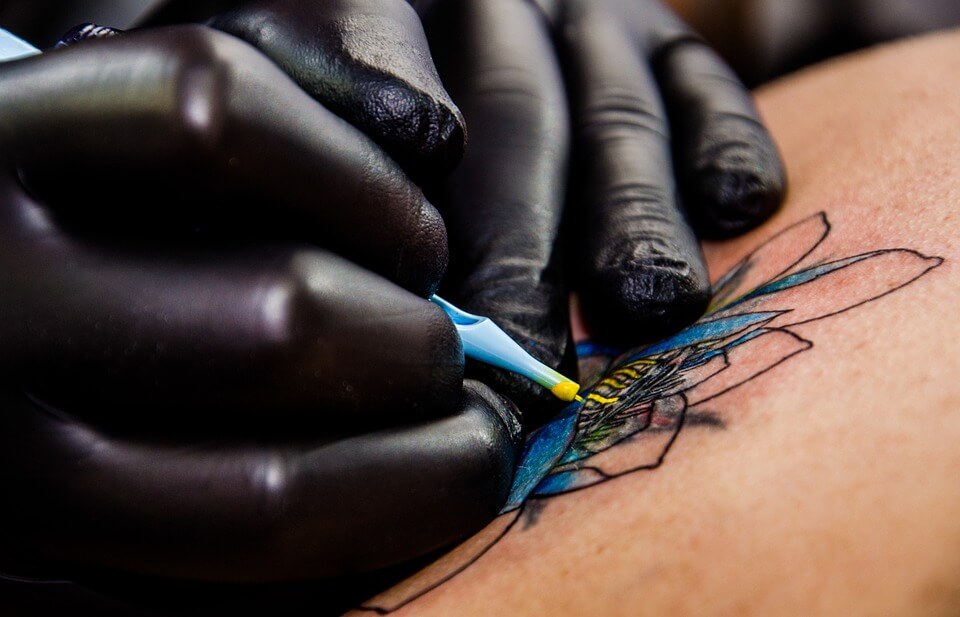Gearing up to get a tattoo is fun and exciting! Who wouldn't want some ink on their skins to artistically show their bodies? But we often see that the pre-tattoo checkups include blood sugar testing. Why is that?
In this blog post, we will review why getting a tattoo might affect our blood sugar levels and what we can do to keep them stable. So let's dive in and explore the intriguing connection between tattoos and blood sugar!
How Does Getting a Tattoo Affect Your Blood Sugar?
Tattooing may affect our blood glucose levels in several different ways.
When our body feels pain from the needling, the brain interprets it as trauma and triggers a fight-or-flight response. So we get the same adrenaline rush during the procedure that we would in a fight-or-flight situation. Adrenaline is a hormone released by the body in response to stress or excitement. In diabetics, this hormone may cause an increase in blood glucose levels. [1]
The tattooing process also affects the activity of another stress hormone called cortisol. In our body, a rise in cortisol level means an increase in stress level. High cortisol levels can also cause a spike in our blood sugar. Tattooing reduces cortisol levels, which can ultimately calm down the body by decreasing stress levels. [2]
The scarring that results from a tattoo may also interfere with healthy blood circulation and impair cells' ability to absorb glucose. Diabetic patients who use insulin pumps or pens should be especially aware of this. In these patients, the scarring could also result in high blood sugar levels and other long-term problems like slowed healing or increased sensitivity at injection sites. [3]

Can (Type I and Type II) Diabetics Get a Tattoo?
It can be daunting for those living with diabetes to get a tattoo. What's especially concerning is whether getting a tattoo would affect blood sugar levels. Thankfully, research suggests that people with diabetes can safely have tattoos so long they take a few safety measures. [2, 4]
Patients with Type I diabetes should closely monitor their blood sugar levels and adjust their insulin dose before getting a tattoo. They should also only get tattoos from approved settings where the tattooist ensures the use of sterile materials and equipment. These hygiene rules can help avoid the risk of skin and other infections from germs on the used tools. [2, 5]
Type II diabetics should talk with their doctors before getting tattooed. The doctor can help them to weigh out safety practices by carefully assessing their conditions. Those with a history of instability or poor control should closely monitor their blood sugar levels before and after getting inked. They should immediately report any changes in their blood glucose level to the doctor. [6]
Suggestion for Getting a Tattoo with Diabetes
People with diabetes must take certain precautions when getting a tattoo. First and foremost, they should avoid getting a tattoo if their blood sugar is too high or too low. They should also consider a few other factors. [3, 7]
Below are some suggestions for diabetics who want to get tattoos.
Control the Blood Glucose Level before You Go
Diabetes patients should refrain from getting tattoos unless they can maintain stable blood sugar levels before, during, and after the procedure. Here are two things they can do to keep their blood sugar within a healthy range while getting a tattoo.
- Drink plenty of water. Drinking enough water throughout the day will help keep the body hydrated during the session. On the other hand, dehydration can make it harder for diabetes patients to maintain a stable blood sugar level. [8]
- Keep a gap of an hour or two between meals. Try eating small, frequent meals. This eating pattern can help replenish the energy needs and prevent sudden changes in blood sugar during or after the session. [9]
Avoid Piercing Certain Parts
Doctors usually advise diabetes patients to avoid piercing several areas when getting a tattoo. In general, they should avoid the following places:
- Poorly circulated areas, such as the abdomen and buttocks
- Muscle-rich areas like the arms, shins, and thighs
- Highly mobile areas, such as the wrists, ankles, and feet
Tattoos in these areas typically heal more slowly than usual, which can cause complications (e.g., infection).
Choose a Certified Tattoo Artist
Diabetes patients should check the tattooist's credentials before getting a tattoo. Tattooing requires the tattooist to work long hours with high accuracy and close attention to detail. So, the best way to avoid complications is to choose an experienced and certified artist.
Certified tattooists often follow standard practices when it comes to sanitation and hygiene, such as using single-use needles and sterile tools. They also ensure that the parlor adheres to the rules of hygiene. All these measures allow the receiver to relax and focus solely on feeling excited about finishing off with something beautiful!
Watch the Glucose Level Closely
People with diabetes must have stable blood sugar levels when getting a tattoo. Otherwise, sudden changes in their blood sugars can put them at risk of having either too high or too low glucose levels. Both conditions can compromise the tattooing process.
- The recipients must follow all safety measures advised by the doctor and the tattooist.
- They should monitor their blood sugar levels during and after the procedure and adjust as needed.

Problems/Risks of Getting a Tattoo with Diabetes
Diabetes can cause several problems that may affect the safety of the tattooing process. The following are a few complications those with diabetes may face after getting tattoos.
Skin Infection
Getting tattoos with poorly managed glucose can negatively impact the tattooing process. Low blood sugar (hypoglycemia) during tattooing increases the risk of infection. High blood sugar (hyperglycemia) makes things easier for bacteria to enter the body during skin piercing. Hence, the tattoo receiver should keep their blood sugar stable before and after the procedure. [3, 10]
Slow Healing
Another common problem that those with diabetes may encounter is the slow healing of tattooed areas. This issue, however, often results from poor glucose control. Hyperglycemia can increase the risk of infection and slow the healing of tattooed skin. [3, 4]
Allergic Reactions
Substances in the inks and equipment can cause allergic reactions such as itchiness or redness after tattooing. Poor tattoo aftercare and nonsterile tool use may also cause these reactions. [11]
Frequently Asked Questions (FAQs)
How to Properly Care for My New Tattoo?
Getting a new tattoo is always exciting. But it is also important to take good care of it over the coming weeks.
In the first week, diabetics should be gentle with the new tattoo because this is the time when it is most vulnerable. They should do the following:
- Wash their hands before touching or cleaning the area
- Use a saline solution to clean it twice a day
- Apply an ointment like Aquaphor until the skin heals completely
- Keep the area dry with paper
- Wear clothing that allows air to pass over the area
- Do not rub it with a cloth or towel
- Do not soak or submerge it in water
- Avoid scabbing – this can lead to loss of ink
- Stay out of direct sunlight
The weeks that follow are also critical for a fresh tattoo. Diabetics should care for it much like they would for any wound or skin rash. They must keep following the above instructions until the tattooed area heals completely.
What is the Expected A1C Range for Getting a Tattoo?
The hemoglobin A1C test shows a person's average blood sugar level over the past two to three months. Diabetic patients should have a hemoglobin A1C level of less than 7% to get a tattoo.
If a person's A1C is higher than 7%, doctors may not approve them for a body modification procedure like tattooing. It is possible that getting a tattoo may badly harm their health.
Tattoo Idea for Diabetes Topic
Choosing the tattoo design is usually personal. People often base their design decisions on things that are meaningful to them.
Some people like to use their tattoos as medical alerts. For a diabetic patient, this might be something in plain text or with medical symbols that they have diabetes.
These 'diabetes tattoos' are becoming quite popular in recent years. Many diabetic patients now use them as a permanent means of diabetes identification, replacing medical jewelry.
Final Thoughts
Getting a tattoo can be an exciting experience for many people. But those with diabetes need to be aware of the potential impact of tattoos on their blood sugar levels.
Several factors influence how a diabetic patient will respond to the procedure. This article covers all these topics so that readers can make an informed decision about getting tattooed.
References
1. Verberne AJ, Korim WS, Sabetghadam A, Llewellyn‐Smith IJ. Adrenaline: insights into its metabolic roles in hypoglycaemia and diabetes. British journal of pharmacology. 2016 May;173(9):1425-37.
2. Lynn CD, Dominguez JT, DeCaro JA. Tattooing to "toughen up": Tattoo experience and secretory immunoglobulin A. American Journal of Human Biology. 2016 Sep 10;28(5):603-9.
3. Kluger N. Contraindications for tattooing. In: Tattooed Skin and Health 2015 (Vol. 48, pp. 76-87). Karger Publishers.
4. Rahimi IA, Eberhard I, Kasten E. Tattoos: What do people really know about the medical risks of body ink?. The Journal of clinical and aesthetic dermatology. 2018 Mar;11(3):30.
5. Kluger N, Aldasouqi S. The motivations and benefits of medical alert tattoos in patients with diabetes. Endocrine Practice. 2013 Mar 1;19(2):373-6.
6. Ahluwalia R, Mills A, Cuthbertson D. An 'Avatar'infection: associated cellulitis in a type 2 diabetes patient following decorative tattooing. Practical Diabetes. 2011 Sep;28(7):292-.
7. Chadwick S, Shah M. Tattoos: ancient body art may assist in medical emergencies. European journal of pediatrics. 2013 Jul;172(7):995-.
8. Popkin BM, D'Anci KE, Rosenberg IH. Water, hydration, and health. Nutrition reviews. 2010 Aug 1;68(8):439-58.
9. Dashti HS, Mogensen KM. Recommending small, frequent meals in the clinical care of adults: a review of the evidence and important considerations. Nutrition in Clinical Practice. 2017 Jun;32(3):365-77.
10. Tampa M, Mitran MI, Mitran CI, Matei C, Amuzescu A, Buzatu AA, Georgescu SR. Viral Infections Confined to Tattoos—A Narrative Review. Medicina. 2022 Feb 23;58(3):342.
11. Tammaro A, Adebanjo GA, Magri F, Chello C, Iacovino C, Parisella FR, Capalbo A, Luzi F, De Marco G. A Peculiar Case of Allergic Granulomatous Reaction to Red Pigment: A Tattoo Touch-Up Treated Surgically. Allergies. 2021 Jul 2;1(3):137-9.










Leave a comment
All comments are moderated before being published.
This site is protected by hCaptcha and the hCaptcha Privacy Policy and Terms of Service apply.